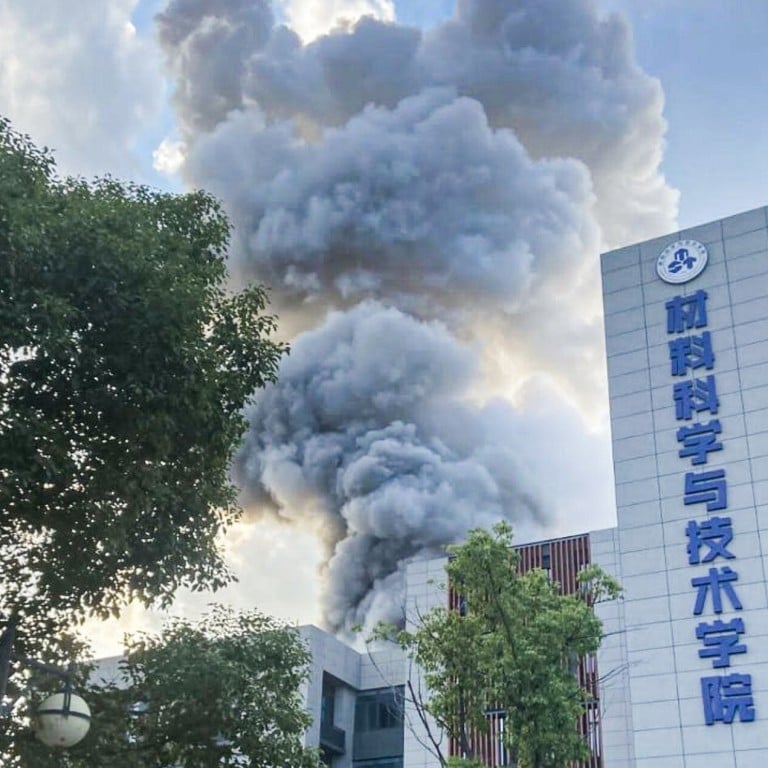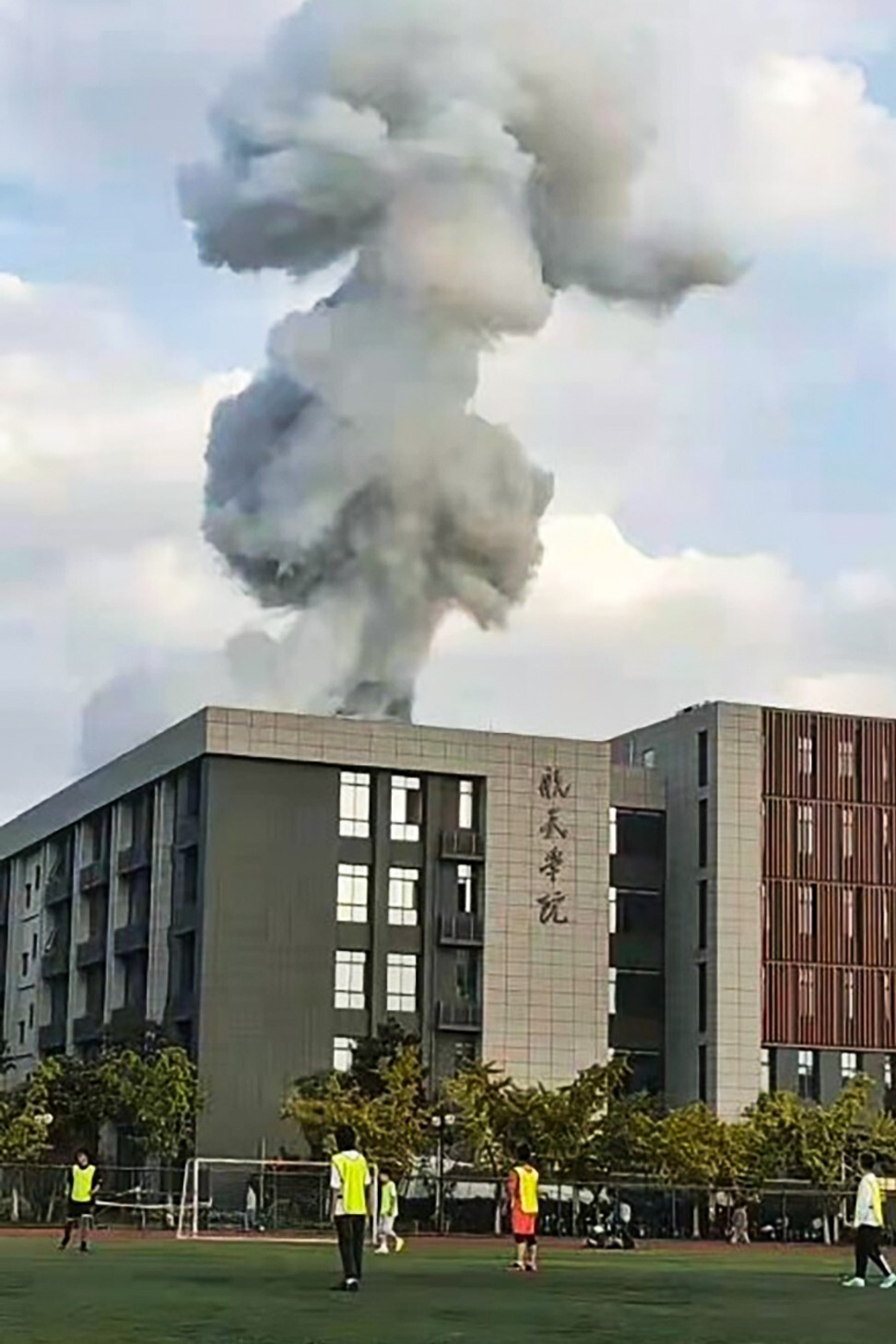
Laboratory blast kills 2 and injures 9 at China’s top aerospace university
- Investigations have started to find the cause of the explosion at Nanjing University of Aeronautics and Astronautics
- University is China’s top defence research institution and is known for producing cutting edge aerospace technology
Two people were killed and nine injured in a laboratory explosion at China’s top national aerospace university on Sunday.
The explosion happened shortly before 4pm at the Jiangjun Road campus of the Nanjing University of Aeronautics and Astronautics, known as the cradle of the country’s cutting-edge aerospace technology.
“Two people died and nine were injured. The reason for the explosion is under investigation and rescue work has ended,” the city’s fire service said on its official Weibo page.
Chinese city blast: residents forced to leave homes and abandon pets
Videos posted on social media showed clouds of smoke billowing from the campus and photographs of a man whose skin was covered in burns and ashes were also circulating online.
The university later confirmed that the explosion at happened at the College of Material Science and Technology and said it had also caused a fire.
The college has five provincial-level key laboratories – specialising in nuclear energy equipment materials, energy conversion, materials preparation and protection from harsh environments and electrochemical storage.

It is not known which laboratory was involved and no further information about the dead and injured has been made available.
The university is China’s top defence research institution and is home to three state-level laboratories, two of which specialise in helicopter technology.
China blast: death toll rises to 4 as residents seek refuge from cold
It was identified by Stanford University’s think tank the Hoover Institution as one of the “Seven Sons of National Defence”, institutions which support China’s “defence research and industrial base and promote or execute military-civil fusion policies, which channel civilian research into military applications.”

